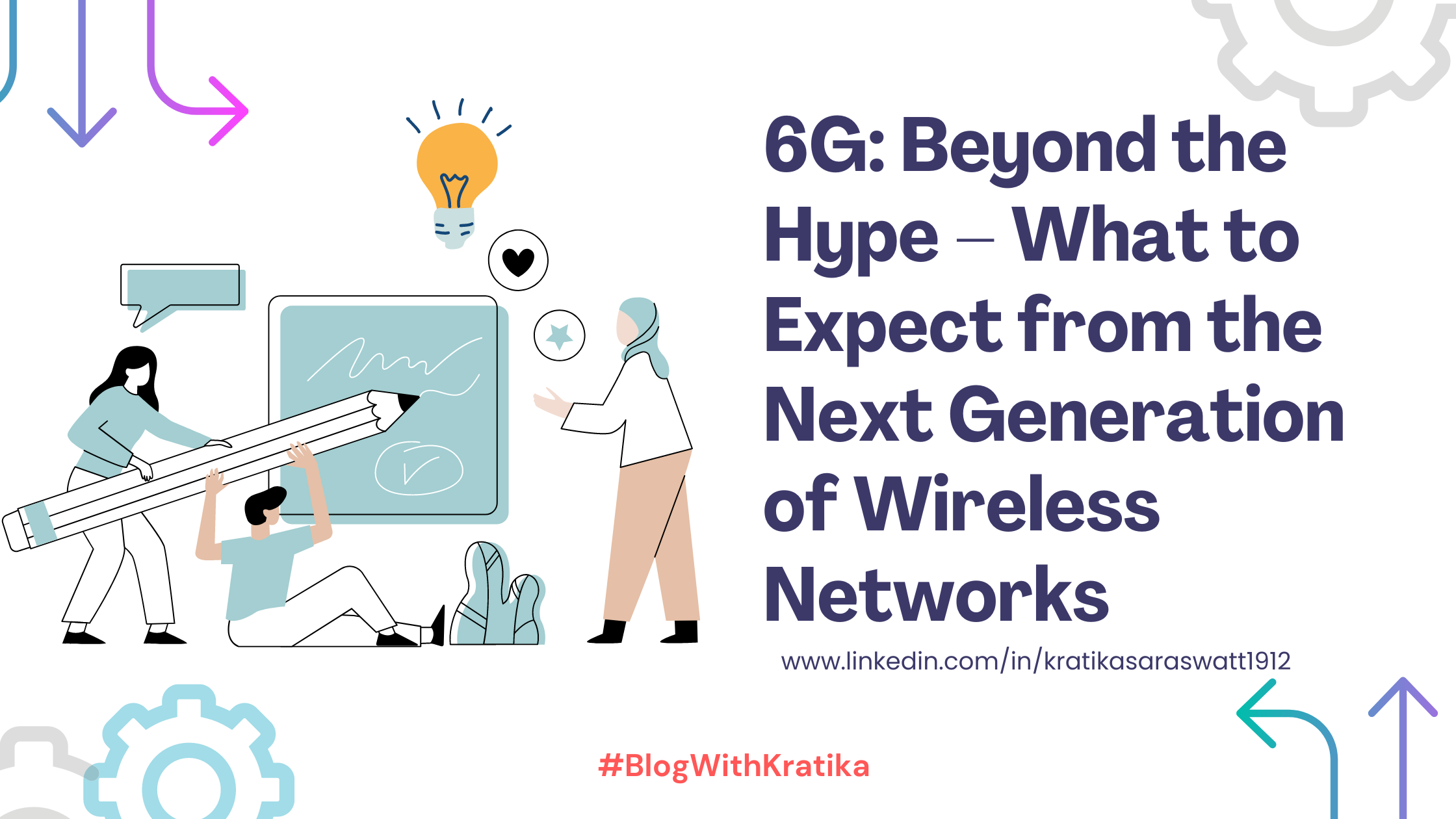6G: Beyond the Hype – What to Expect from the Next Generation of Wireless Networks
 Kratika Saraswat
Kratika Saraswat
As the world continues to embrace the wonders of 5G, the tech industry is already setting its sights on the next frontier: 6G. This upcoming technology promises to revolutionize the way we connect, communicate, and interact with our digital environment. But what exactly is 6G, and what can we realistically expect from this next-generation wireless network? Let's delve deeper into the potential of 6G and separate the hype from the reality.
The Evolution from 5G to 6G
The transition from 4G to 5G brought about significant improvements in speed, latency, and connectivity. 5G opened doors to new possibilities in various fields, from autonomous driving to the Internet of Things (IoT). However, as our technological needs continue to grow, so does the demand for even more advanced wireless networks. Enter 6G, the sixth generation of mobile communication technology, which aims to address these evolving demands.
What is 6G?
6G, or the sixth-generation wireless technology, is expected to build upon the foundation laid by 5G. While 5G focuses on enhancing mobile broadband, ultra-reliable low-latency communication (URLLC), and massive machine-type communication (mMTC), 6G aims to take these capabilities to the next level. It is anticipated to provide even higher data rates, lower latency, and more reliable connections, thereby enabling a wide range of futuristic applications.
Key Features and Capabilities
Terahertz Frequencies: One of the most significant advancements in 6G is the use of terahertz (THz) frequencies. These frequencies, ranging from 100 GHz to 10 THz, offer incredibly high bandwidths, which can support data rates of up to 1 Tbps (terabits per second). This will result in faster downloads, smoother streaming, and more efficient data transfer.
Ultra-Low Latency: 6G aims to achieve ultra-low latency of less than 1 millisecond, which is essential for real-time applications like augmented reality (AR), virtual reality (VR), and telemedicine. This will enable seamless interactions and a more immersive user experience.
Enhanced Connectivity: With 6G, the goal is to provide ubiquitous connectivity, ensuring that devices remain connected even in the most remote areas. This will be achieved through advanced satellite networks and improved network infrastructure.
AI-Driven Networks: Artificial intelligence (AI) will play a crucial role in the management and optimization of 6G networks. AI-driven algorithms will enhance network efficiency, predict and mitigate potential issues, and enable dynamic resource allocation.
Advanced Security: As cyber threats become more sophisticated, 6G will incorporate advanced security measures to protect user data and ensure privacy. Quantum encryption and blockchain technology are expected to be integral components of 6G security.
Potential Applications of 6G
Holographic Communication: Imagine having a holographic conversation with a colleague on the other side of the world. 6G's high data rates and low latency will make holographic communication a reality, offering a more lifelike and engaging way to interact.
Smart Cities: 6G will be a cornerstone in the development of smart cities, enabling efficient traffic management, energy distribution, and public safety. With enhanced IoT connectivity, cities will become more sustainable and responsive to the needs of their inhabitants.
Telemedicine: The healthcare sector will benefit immensely from 6G technology. Remote surgeries, real-time health monitoring, and advanced telemedicine applications will become more reliable and accessible, improving patient care and outcomes.
Autonomous Systems: From self-driving cars to drones, 6G will provide the necessary infrastructure for autonomous systems to operate safely and efficiently. The low latency and high reliability of 6G networks will be critical for these technologies to thrive.
Challenges and Considerations
While the potential of 6G is undoubtedly exciting, several challenges need to be addressed before it becomes a reality. The development and deployment of 6G infrastructure will require significant investment and collaboration between governments, industries, and academia. Additionally, the use of terahertz frequencies poses technical challenges related to signal propagation and interference, which must be overcome.
Furthermore, the widespread adoption of 6G will necessitate the creation of new standards and regulations to ensure interoperability and fair competition. Ethical considerations, such as data privacy and digital divide, will also need to be carefully managed to ensure that the benefits of 6G are accessible to all.
Conclusion
As we look beyond the hype, it is clear that 6G has the potential to revolutionize the way we live, work, and communicate. By providing faster speeds, lower latency, and more reliable connections, 6G will enable a wide range of innovative applications that will transform various industries and improve our daily lives. However, realizing this vision will require overcoming significant technical, financial, and regulatory challenges. As we move towards this exciting future, it is essential to keep our expectations grounded in reality and work collaboratively to harness the full potential of 6G technology.
Subscribe to my newsletter
Read articles from Kratika Saraswat directly inside your inbox. Subscribe to the newsletter, and don't miss out.
Written by
